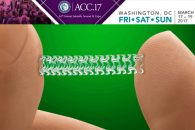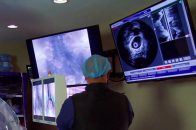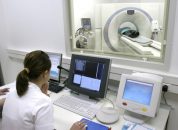Courtesy of Dr. Carlos Fava One of the present challenges of TAVR is bicuspid aortic valve stenosis (AS), since it presents a different distribution and structure, associated to greater and more irregular calcification. There are only small series of devices and their use is still controversial. The study analyzed 561 patients with severe bicuspid…
Peripheral artery disease associated to ischemic and bleeding events after DES implantation
Patients with peripheral artery disease (PAD) have higher rates of cardiovascular events after DES implantation, which could be explained partly by higher platelet reactivity. The present work studies the relationship between platelet reactivity and clinical events after PCI in patients with and without a history of peripheral artery disease. The ADAPT-DES study (Assessment of…
ABSORB III: More Events with Absorb Than With Xience at Two Years
The two year outcomes of ABSORB III, presented at the scientific sessions of the American College of Cardiology 2017, have shown the bioresorbable scaffold Absorb GT1 (BVS, Abbott Vascular) was associated with increased risk of target vessel failure, compared against the everolimus eluting stent Xience. At 25 months, target vessel failure occurred in 11%…
Interventionists Used to the Radial Approach No Longer Associated with Worse Femoral
The transradial approach is being increasingly adopted as preferred access site, since it is more comfortable for patients, reduces vascular and bleeding complications, is cost effective and reduces mortality in high risk patients. This has created concern about the fact that operators and institutions could become unfamiliar with the transfemoral approach. The aim of…
Why We Should Use IVUS in Complex Coronary Lesions
Courtesy of Dr. Carlos Fava. Drug eluting stents (DES) have shown benefits in terms of restenosis vs. conventional bare metal stents (BMS). Many of the advantages of DES depend on correct implantation, especially in complex lesions. In complex lesions, the use of intravascular ultrasound (IVUS) provides important information on lesion length, vessel diameter, calcification…
Best Revascularization Strategy for Severe Carotid and Coronary Artery Disease
Courtesy of Dr. Carlos Fava. Carotid artery disease is an important cause of stroke and is associated to coronary artery disease. When patients need myocardial revascularization surgery (Carotid Artery Bypass Graft) and cannot wait one month or more for carotid revascularization, the optimal management strategy is still controversial. The aim of this study was…
Incomplete Revascularization: Increased Events Rate in Non-Cardiac Surgery?
The aim of this study was to determine whether incomplete revascularization is associated to higher adverse events risk and acute myocardial infarction in patients undergoing non-cardiac surgery. Coronary artery disease patients or patients with prior PCI often have non cardiac surgery. These patients may have had all obstructions treated before surgery (complete revascularization) or…
Is it possible to reduce PCI costs without compromising safety?
Courtesy of Dr. Carlos Fava. Health system costs have increased significantly and there have been attempts to reduce it without compromising the quality of PCI outcomes. The benefits of the transradial approach combined with same day discharge could help reach this goal. This study included 279,987 MEDICARE PCI procedures where costs were analyzed. Cases…
The ReACT Study: Is Angiographic Follow-Up Necessary?
The purpose of this study was to assess the long-term clinical impact of routine angiographic follow-up after coronary angioplasty. Routine angiographic follow-up has been criticized by both clinical and interventional cardiologists for increasing the rate of coronary revascularization due to the “oculostenotic reflex.” This caused a shift in the paradigm for clinical studies, and…
Sinus Aspiration against Contrast Induced Kidney Injury: Yes or No?
Contrast induced kidney injury incidence is in direct correlation to the administered contrast. The aim of this study was to assess the safety and efficacy of sinus aspiration immediately after PCI as a measure to reduce the volume of contrast arriving in the kidneys. The study included 43 patients with diabetes and renal impairment…
New Technique to Calculate CT-Derived Fractional Flow Reserve: Is It Accurate?
This study describes the accuracy of the new computed tomography (CT) technique to calculate fractional flow reserve (FFR). Other CT techniques to measure FFR use allometric scaling and assume coronary microvascular resistance. However, instead of assuming these parameters, this new technique calculates them based on coronary and aorta lumen deformation. The accuracy of this…










